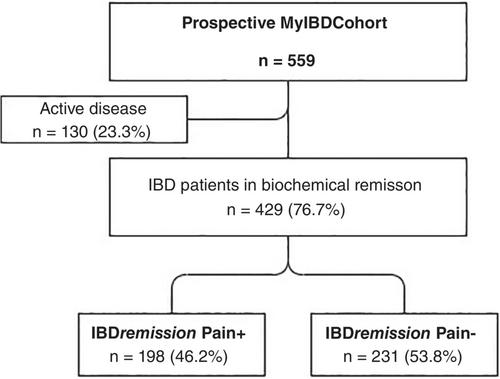Abdominal pain in patients with inflammatory bowel disease in remission: A prospective study on contributing factors
Abstract
Background
Abdominal pain is highly prevalent in patients with inflammatory bowel disease (IBD) in remission, but the aetiology is incompletely understood.
Aim
To investigate the association of clinical, lifestyle and psychosocial factors with abdominal pain in patients with IBD in remission.
Methods
We performed a prospective multicentre study enrolling consecutive patients with IBD. Data were collected between 1 January 2020 and 1 July 2021, using myIBDcoach, an established remote monitoring platform for IBD. Chronic abdominal pain in IBD in remission (IBDremissionPain+) was defined as abdominal pain score ≥3 (0–10 NRS) on ≥1/3 of all assessments, combined with faecal calprotectin <150 μg/g in 90 days around periodic assessments. Disease activity, lifestyle and psychosocial factors were assessed every 1–3 months during 18 months. Using linear mixed models, the association of these factors with abdominal pain over time was analysed.
Results
We included 559 patients, of whom 429 (76.7%) remained in biochemical remission. Of these, 198 (46.2%) fulfilled the criteria for chronic abdominal pain. IBDremissionPain+ patients were characterised by female sex, younger age, higher BMI, and shorter disease duration. They reported more often or higher levels of stress, fatigue, depressive and anxiety symptoms, and life events (all p < 0.001). In the multivariable analysis, sex, disease entity, fatigue, depressive symptoms and life events were associated with abdominal pain over time (all p < 0.05).
Conclusion
In this cohort of patients with IBD in remission, abdominal pain was common and associated with psychosocial factors. A more holistic treatment approach for patients with IBD suffering from abdominal pain may improve quality of care and subjective wellbeing.


 求助内容:
求助内容: 应助结果提醒方式:
应助结果提醒方式:


